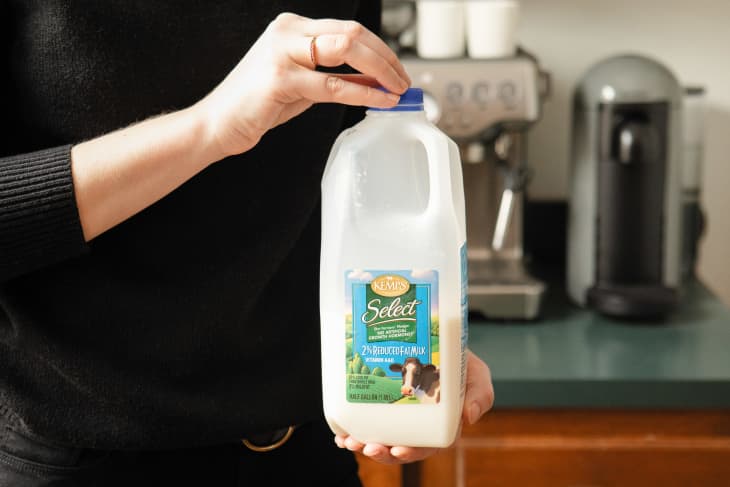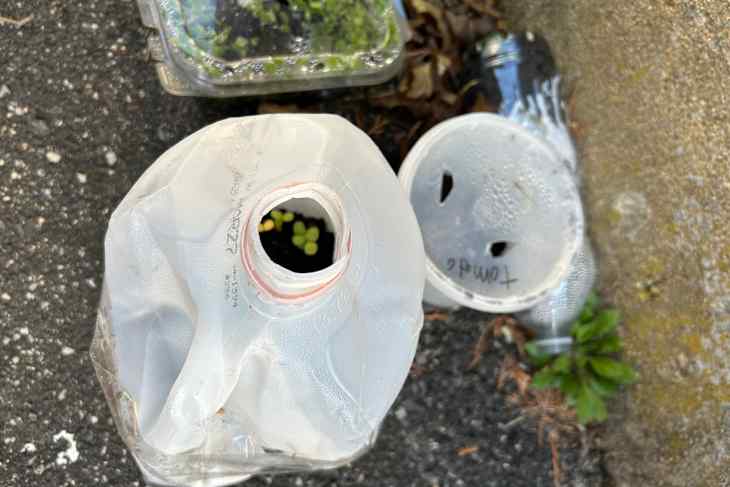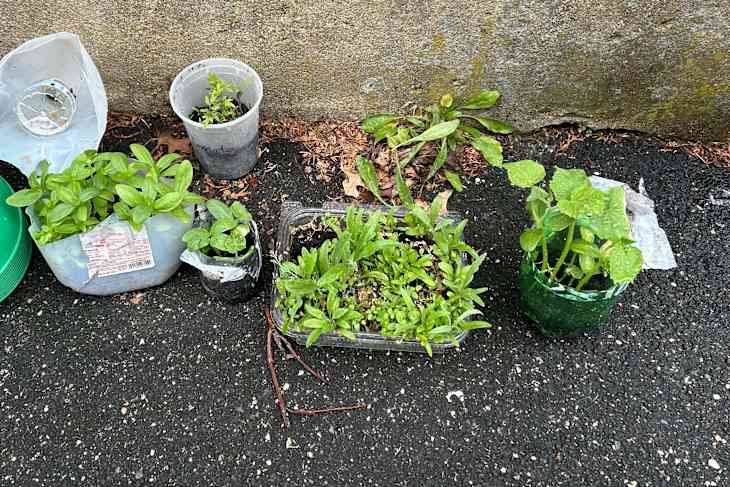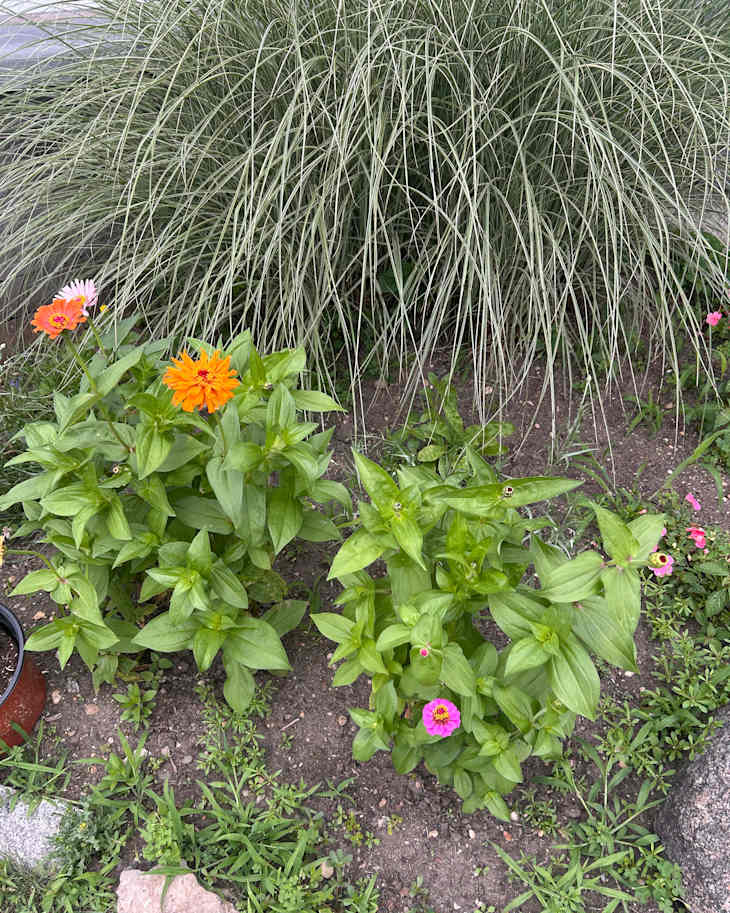

If you’ve never heard of “winter sowing,” you might think it’s a cold-weather activity that takes care of those holey socks and tattered blankets. It’s not! It’s actually a planting technique that uses clear or translucent plastic containers like milk jugs, soda bottles, and even plastic salad containers or berry containers to start growing plants from seeds. And I swear by it!
I grew up with my mom starting her garden’s seedlings under grow lights in the basement since we live in the Northeast and the spring is often cold and unfavorable to seeds until May. I’ve had my garden in Long Island for six years now and considered starting my spring garden from seeds with lights this year, but with two small kids at home, the idea of setting up the lights, keeping the little hands away from the seedlings, and remembering to care for the new plants felt like a lot.
This year, my mom introduced me to “winter sowing,” noting that she was using clear 1-gallon milk jugs to kick-start her seeds. She explained the process over the phone and told me to look it up on YouTube, saying there are plenty of videos that break down how to do it.
How to Sow Seeds in an Old Plastic Milk Carton

Why am I obsessed with winter sowing in milk jugs? It’s environmentally friendly (no electricity used), you’re upcycling a plastic container one more time before recycling it, and it’s pretty hands-off once you get the seeds planted. Here’s how I prepped my seeds in the gallon milk carton, and how you can, too. (And yes, you can still recycle it later!).
- Clean the jug with soap and water and let it dry.
- Recycle the cap. You don’t need it with winter sowing because you want the rain to fall into the open jug.
- Use a box cutter (or scissors or a knife) to poke drainage holes in the bottom. They don’t have to be big, but aim for four to six holes for a 1-gallon jug. This helps the water escape.
- Carefully slice open the jug under the handle, almost in half but leave a small piece connected so the top can swing open and close.
- Use any gardening soil you’d normally use for planting seeds. Fill up half of that gallon jug bottom section with soil and add water to help it stay moist.
- Sprinkle in five to seven seeds (I opted for Zinnia seeds) and spread them out evenly. Top those with more soil, gently pat them down, then pour a little more water on top.
- Close the top of the jug so it lines up with the bottom part and tape it shut. I used clear packing tape, but I’ve seen videos where they use duct tape, electrical tape, or blue painter’s tape. You ideally want something wide and thick that won’t let water in.
- Label your jug and choose a sunny location for your mini greenhouse. I wrote “Zinnias” with a Sharpie on the side and set it on my protected driveway in the sun.
I planted mine in April and within two weeks, I saw small stems start to pop up. I texted my mom within 10 days that it was 31 degrees outside in New York and my wildflowers were already growing! I was worried they would die out there in the cold, but these makeshift mini greenhouses are warm and humid — just how the seeds like it. I’ve even seen in some YouTube videos, like Jenna’s, that people place them outside as early as February, surrounded by snow.

I didn’t bother watering my flowers most of the time because we had a very wet spring, but I did check on them and everything was shooting up quickly. I couldn’t believe this science experiment was working out so well.
In the first week of May, I opened up the containers by removing the top part of the jug so they’d get more light and to prevent overheating from warmer temps. By mid-May, I transferred my plants into the ground or pots to keep them going. I tossed the mini greenhouses (sans tape) into the recycling bins.

It’s July, and now we have baby cucumbers and tomatoes growing on our patio as well as a ton of tall Zinnias and a beautiful mix of wildflowers! Not only was this a fun way to start a garden — easy for amateur gardeners, and you can even get the kids involved — and a clever way to put an old milk jug to use, but it costs much less than using electricity for grow lights.
What’s your favorite, most surprising gardening trick? Let us know in the comments below!
